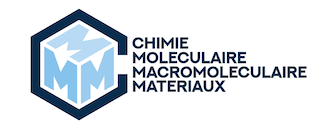A. Quinteros-Sedano, B. Le Besnerais, N. J. Van Zee, R. Nicolaÿ
Chem. Mater. 2025, asap. https://doi.org/10.1021/acs.chemmater.5c00154
Boronic ester-based vitrimers have garnered significant attention in the polymer science community owing to their chemical stability, ease of synthesis, and recyclability. However, like most vitrimers, these materials tend to exhibit high viscosity at high temperature, making them difficult to process. Moreover, the dynamicity of boronic ester exchange at room temperature can result in poor creep resistance under service conditions for elastomeric vitrimers. Herein, we sought to address the balance of processability and mechanical performance by exploiting dioxazaborocane groups, which are a scarcely explored class of boronic esters featuring a dative nitrogen–boron bond. Both dioxazaborocane- and dioxaborolane-based vitrimers were prepared from low glass transition temperature (Tg) polymethacrylate precursors bearing pendant complementary functional groups. Compared to dioxaborolane vitrimers, dioxazaborocane vitrimers exhibit faster relaxation dynamics at high temperatures, leading to more processable materials. The dioxazaborocane vitrimers also display improved tensile properties and competitive creep resistance, especially when using highly entangled precursors. This combination of enhanced processability and mechanical performance renders the dioxazaborocane group as an attractive motif for implementing into vitrimers.


